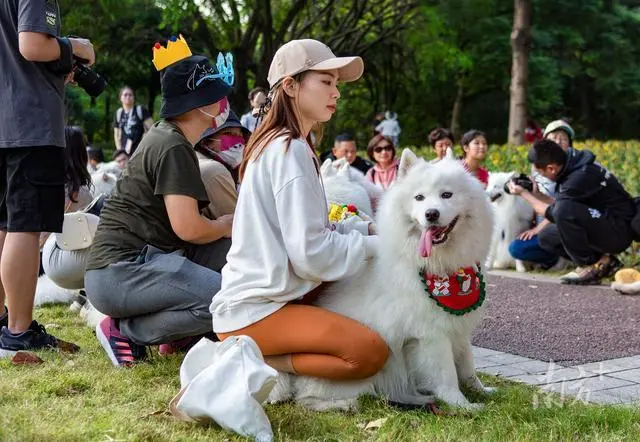Family gatherings are a wonderful time for connection and celebration, but they can also be stressful for our pets. Changes in routine, new faces, and heightened noise levels can overwhelm them. This comprehensive guide provides essential considerations for ensuring your pets feel safe and comfortable during family events.

1. Understanding Your Pet’s Needs
The Importance of Recognizing Pet Behavior
Before the gathering, it’s crucial to understand your pet’s behavior. Different pets respond uniquely to stress:
- Dogs: Often crave attention but can become anxious in large groups.
- Cats: May seek solitude when overwhelmed.
Recognizing your pet’s behavior can help you plan for their needs effectively.
Signs of Stress in Pets
Be aware of signs indicating that your pet may be stressed, such as:
- Excessive barking or meowing
- Hiding or seeking isolation
- Changes in appetite or litter box habits
2. Preparing Your Home for Pets
Creating a Safe Space
Designate a quiet area in your home where your pet can retreat if they feel overwhelmed. This space should include:
- Comfortable Bedding: Ensure there’s a cozy spot for your pet to relax.
- Favorite Toys: Familiar items can help ease anxiety.
- Access to Food and Water: Make sure they have everything they need within reach.
Securing Potential Hazards
Family gatherings can introduce new risks for your pets. Take these precautions:
- Remove Toxic Foods: Ensure that foods harmful to pets, such as chocolate, grapes, or onions, are out of reach.
- Secure Cleaning Supplies: Guests may inadvertently leave harmful substances out.
- Close Off Dangerous Areas: Block access to stairs or rooms that might pose a risk.
3. Introducing Guests to Your Pets
Gradual Introductions
When guests arrive, it’s important to introduce your pets slowly. Here are some tips:
- Supervise Interactions: Always supervise pets during introductions to prevent any negative encounters.
- Allow Time for Adjustment: Give your pets time to sniff and get comfortable with new people at their own pace.
Educating Guests About Your Pets
Inform your guests about your pet’s preferences and boundaries. Discuss the following:
- Pet’s Comfort Level: Let guests know if your pet is shy or prefers to be left alone.
- Do Not Disturb Signs: Consider placing signs in the designated pet area to remind guests to respect your pet’s space.
4. Managing Feeding Schedules
Sticking to Regular Feeding Routines
Consistency in feeding schedules is vital for your pet’s well-being. Tips include:
- Feeding Before Guests Arrive: Serve your pet their meal before guests to avoid stress during mealtime.
- Avoid Table Scraps: Encourage guests not to feed your pet human food, which can upset their stomach and lead to behavior issues.
Providing Treats Wisely
If you want to include your pets in the festivities:
- Healthy Treats: Offer special, pet-safe treats that won’t disrupt their diet.
- Portion Control: Monitor the quantity to prevent overeating, especially with excited guests around.
5. Keeping Pets Entertained
Engaging Activities for Pets
During gatherings, your pets may need help channeling their energy positively. Consider the following:
- Interactive Toys: Provide toys that stimulate their minds, like puzzle feeders or treat-dispensing toys.
- Scheduled Playtime: Set aside time for play sessions to help expend energy.
Using Calming Aids
For particularly anxious pets, calming aids can be beneficial:
- Pheromone Diffusers: Products like Feliway or Adaptil can create a calming environment.
- Calming Treats: Consider natural supplements that promote relaxation, but consult your vet first.
6. Monitoring Pet Behavior
Keeping an Eye on Interactions
Throughout the gathering, continuously monitor your pet’s interactions with guests. Look for signs of stress or discomfort, such as:
- Ears pinned back
- Tail tucked
- Attempts to escape the area
Being Prepared to Intervene
If your pet seems overwhelmed:
- Redirect Their Attention: Guide them back to their safe space.
- Take Breaks: If your pet is particularly anxious, consider taking short breaks away from the gathering.
7. Post-Gathering Care
Reassessing Your Pet’s Needs
After the event, take time to observe how your pet reacts. This includes:
- Behavior Changes: Note any shifts in behavior that could indicate stress.
- Health Monitoring: Keep an eye on eating, drinking, and bathroom habits.
Providing Comfort
Spend quality time with your pet to help them feel secure. Activities can include:
- Gentle Petting: Offer soothing touches to calm them down.
- Engaging Play: Reintroduce regular play sessions to return to routine.
8. Consulting with Professionals
When to Seek Veterinary Advice
If your pet shows prolonged signs of distress or behavior changes post-gathering:
- Veterinary Consultation: Discuss any concerns with your veterinarian, especially if health issues arise.
- Behavioral Specialists: Consider consulting an animal behaviorist if anxiety persists.
Conclusion
Caring for your pets during family gatherings requires foresight, planning, and an understanding of their needs. By creating a safe environment, managing interactions, and providing comfort, you can ensure that both your pets and your guests have a positive experience. With these strategies, your family gatherings can be enjoyable for everyone, including your furry friends.

Comments (0)